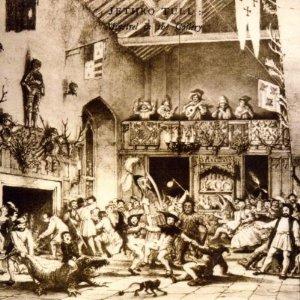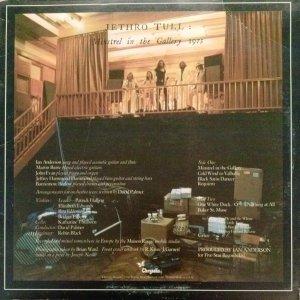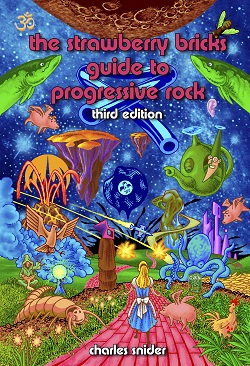Minstrel In The Gallery


| Tracklist | |||
| A1 | Minstrel In The Gallery | 8:09 | |
| A2 | Cold Wind To Valhalla | 4:17 | |
| A3 | Black Satin Dancer | 6:51 | |
| A4 | Requiem | 3:41 | |
| B1 | One White Duck / O10 = Nothing At All | 4:35 | |
| B2.1 | Pig-Me And The Whore | 16:40 | |
| B2.2 | Nice Little Tune | ||
| B2.3 | Crash-Barrier Waltzer | ||
| B2.4 | Mother England Reverie | ||
| B3 | Grace | 0:37 | |
Artwork By [Front Cover] - J. Garnett
Artwork By [Front Cover] - R. Kriss
Bass [Bass Guitar], Double Bass [String Bass] - Jeffrey Hammond-Hammond
Cello - Katherine Thulborn
Conductor - David Palmer
Drums, Percussion - Barriemore Barlow
Engineer - Robin Black
Guitar [Electric] - Martin Barre
Leader [Violins] - Patrick Halling
Photography - Brian Ward
Piano, Organ - John Evan
Producer - Ian Anderson
Violin - Bridget Procter
Violin - Elizabeth Edwards
Violin - Rita Eddowes
Vocals, Acoustic Guitar, Flute - Ian Anderson
Written-by [All Compositions] - Ian Anderson
Written-by [Arrangements For Orchestra] - David Palmer
Recorded and mixed somewhere in Europe by the Maison Rouge mobile studio.
Front Cover Artwork based on a print by Joseph Nash.

